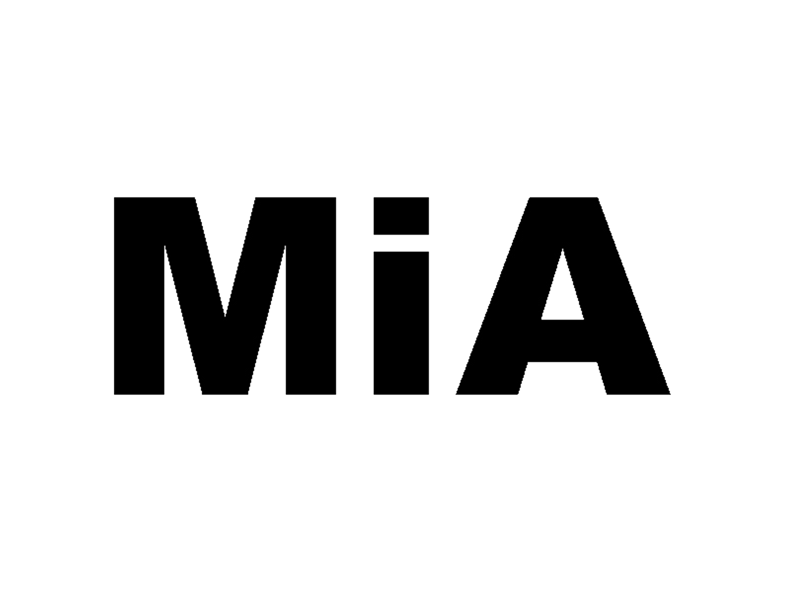Martin Ebner and Ariane Müller. Still from T as Tennis, 2013. Courtesy of the artists.
martin ebner and ariane Müller
-
Ariane (A): I think that collaboration means that you support in your actions the goals and aims of someone else. This is maybe why it has this slightly discomforting notion which one can trace in the noun collaborator. In contrast to “cooperation” when you share the goals, “collaboration” can also mean, that for the time being you don’t even understand the aims of someone else but you put enough trust in the person him or herself that you are willing to work in his or her direction even without having full knowledge or understanding of these aims. In this it is an endeavor in trust building, and as well in a sort of unselfing of the self, not putting your own goals into the foreground and seeking likeminded partners to obtain that but in thinking that following and supporting other people’s strategies can lead to something unforeseen, and therefore something one ultimately wishes for as well.
Martin (M):
The term collaboration still carries the Latin word laborare, originally meaning “to work, to labour, to produce, be troubled, be sick, be oppressed, even: to be in pain.” The prefix co-, means together, “not alone,” which might be soothing and encouraging.
The terms Job, Work, Labor, even if they mean different things, in German can all be reduced to the single word Arbeit. Arbeit is also what the output of the artist can be called, for example, a painting, the work, a “piece.” But often the labour of an artist is not recognized also being a job. Arbeit is a very special thing/term, complex and transforming, and in most cases, the Arbeit (work) the single grown-up artist produces (the “produce,” in the studio) is immediately considered part of the artist's private (intellectual or material) property, from where the communicative transmission under common capitalist conditions would take its origin, leading to transaction/exchange, preferably in some kind of art related private luxury market surrounded by boutiques, fairs, museums. Now if a collaboration between two or more people is happening, for whatever reason, this time-based logic and linearity is shifted, bent, and transformed. Other terms come to mind: sharing, trust, commitment, compassion. The transaction/exchange is floating in a rather processual manner. This can be challenging, but also very interesting. Even some assumptions of how society works might be questioned. Let’s read more David Graeber. And improve public transport.
-
A: It very rarely occurs. Collective is more common when people need to obtain infrastructure, an exhibition platform, a space, a studio, a financial backing. Collaborative is rare because artists are taught to believe in their uniqueness, and that this uniqueness is their main selling proposition. Alas, working in the direction of, or for, someone else is seen as a weakness (if this work is not paid).
M: Collective and collaborative efforts can lead to the most wonderful and unforeseen achievements, and it does not mean at all, that the individual is not being recognized and seen. Think of a festival. Impossible without collaboration! Or a movie. Even preparing a simple party is a celebration of collectivity, creating memories and shaping the sense of belonging. And of course, even Bartleby would have been invited and allowed to sit at the table, free to leave or not whenever he doesn’t want.
-
A: We are more pressed by financial difficulties than has been. The disparity between high and low-income groups has become bigger, and since artists mostly depend on fewer but richer high-income persons the art world has shifted into showcasing and representing richness or wealth. Poverty is not something anyone is competing for or representing. The housing market has become an investment playground making it more difficult to access proper dwellings and other spaces for the average person, and for artists as well. This also means that your liberties of going to places, meeting, and exchanging are getting less since you have less money for that. This results, as a positive move, in the art scene has become more local over the last ten years, but it also means that your possibilities for a real exchange diminish.
M: I am not sure I evolved, but… I quit smoking and social media, went out more to the greens and the mountains, stopped biking in inner-city traffic, and enjoyed flowers and plants. Started some painting, with the generous help of Ariane, improved my listening abilities, and made a lot of non-music, sounds, for myself, wondering why visual artists cannot be like musicians, improvising, jamming together, forming bands and ensembles, just like that.
-
A: You constantly have to decide between memory and death. You will not really remember every detail of the now. These lines, I am writing at the moment, maybe will be not remembered tomorrow, alas the notion, the sentence, I will have subjected to die, meanwhile memory can transport the strangest details through time, and therefore transgress time. One is not even conscious of it. One can also remember things on purpose, but one can not forget on purpose, and so one only has the choice to remember or subject the occurrence, the thought, the glimpse of something, to die.
M: Optimistically spoken, I try to understand the idioms and articulations of the time I am living in and always embrace visual dynamics, new melodies and linguistic playfulness. Complexity is so interesting. There is this formidable, but quite unknown app, which reveals a lot of phenomena regarding the individual versus the collective: “Parametric Creature: Lab.”
Martin Ebner and Ariane Müller are artists based in berlin, Germany.
Collaboration with Mia Collective Art:
the covid-19 diaries series: new normal, 2020
*Ten Years, Ten Artists is part of the collective's 10th-anniversary celebration, reconnecting with selected past collaborators to reflect on the theme of 'collaboration.'
CLICK HERE to view the 10th Anniversary Table of Contents page.

